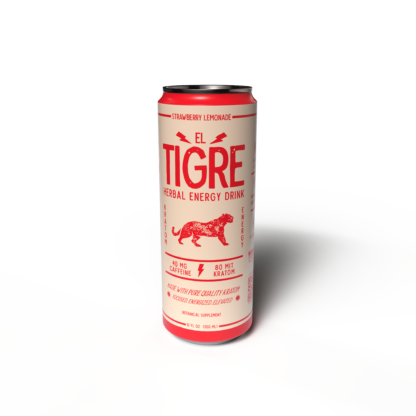Pharmacological Interactions
Pharmacological interactions, where multiple substances influence each other’s effects within the body, can lead to unpredictable outcomes. Understanding these interactions is crucial, especially when combining natural stimulants like those found in kratom and energy drinks. This article delves into the synergistic effects of kratom and other common natural stimulants found in energy drinks, exploring their combined impact on the body and potential health implications.
Kratom’s Effects on Neurotransmitters
Kratom exerts its effects by interacting with various neurotransmitters in the brain. It primarily binds to opioid receptors, mimicking the actions of morphine and producing analgesic and sedative effects at higher doses. However, kratom also impacts other neurotransmitter systems, including dopamine, serotonin, and norepinephrine, contributing to its stimulant-like properties at lower doses. These neurotransmitters play crucial roles in regulating mood, energy levels, focus, and pain perception.
When combined with stimulants commonly found in energy drinks, such as caffeine or guarana, kratom’s effects can be intensified and prolonged. Caffeine also acts on the central nervous system, primarily by blocking adenosine receptors, leading to increased alertness and energy. The simultaneous stimulation of multiple neurotransmitter pathways through the combined action of kratom and these stimulants can result in amplified feelings of euphoria, enhanced energy, and heightened mental focus.
Stimulant Synergism with Other Energy Drink Ingredients

However, this synergistic effect comes with potential risks. Excessive stimulation can lead to anxiety, insomnia, tremors, and even cardiovascular complications. The combination may also exacerbate pre-existing conditions like hypertension or heart arrhythmias. Furthermore, the long-term effects of chronic kratom use combined with energy drink stimulants remain poorly understood, raising concerns about potential addiction and dependence.
It is crucial to exercise caution when mixing kratom with other stimulants found in energy drinks. Moderation and awareness of individual responses are essential. Individuals with pre-existing health conditions or those sensitive to stimulants should avoid this combination altogether. Consulting a healthcare professional before incorporating either substance into one’s routine can provide valuable guidance and mitigate potential risks.
Potential for Enhanced CNS Stimulation
The combined effect of kratom and common energy drink stimulants like caffeine or guarana creates a potentially dangerous synergistic interaction. Kratom, known to impact multiple neurotransmitter systems, including dopamine, serotonin, and norepinephrine, amplifies the stimulant effects of caffeine. This can lead to heightened feelings of euphoria, increased energy, and enhanced focus.
However, this intensified stimulation carries significant risks. Anxiety, insomnia, tremors, and cardiovascular issues can arise from excessive CNS activation. Individuals with pre-existing health conditions, such as hypertension or heart arrhythmias, are particularly vulnerable to adverse effects.
The long-term consequences of chronic kratom use coupled with energy drink stimulants remain largely unknown. Potential for addiction and dependence is a growing concern. Due to these risks, it is essential to exercise extreme caution when combining these substances.
Metabolic and Physiological Impacts
Combining natural stimulants like those found in kratom and energy drinks can lead to unpredictable and potentially dangerous effects. Kratom, known to influence multiple neurotransmitter systems, can amplify the stimulant properties of caffeine and guarana commonly found in energy drinks. This synergistic interaction results in heightened feelings of euphoria, increased energy, and enhanced focus. However, this amplified stimulation comes with significant risks, including anxiety, insomnia, tremors, and potential cardiovascular complications.
Increased Heart Rate and Blood Pressure
The combined effect of kratom and common energy drink stimulants like caffeine or guarana creates a potentially dangerous synergistic interaction. Kratom, known to impact multiple neurotransmitter systems, including dopamine, serotonin, and norepinephrine, amplifies the stimulant effects of caffeine. This can lead to heightened feelings of euphoria, increased energy, and enhanced focus.
- Kratom’s interaction with opioid receptors can mimic the effects of morphine, leading to analgesic and sedative effects at higher doses.
- However, kratom also impacts other neurotransmitter systems, including dopamine, serotonin, and norepinephrine, contributing to its stimulant-like properties at lower doses.
- Caffeine, commonly found in energy drinks, acts on the central nervous system by blocking adenosine receptors, leading to increased alertness and energy.
However, this intensified stimulation carries significant risks. Anxiety, insomnia, tremors, and cardiovascular issues can arise from excessive CNS activation. Individuals with pre-existing health conditions, such as hypertension or heart arrhythmias, are particularly vulnerable to adverse effects. The long-term consequences of chronic kratom use coupled with energy drink stimulants remain largely unknown. Potential for addiction and dependence is a growing concern. Due to these risks, it is essential to exercise extreme caution when combining these substances.
Altered Glucose Metabolism
The combined consumption of kratom and stimulants commonly found in energy drinks can lead to significant metabolic and physiological impacts. Kratom’s interaction with opioid receptors, mimicking morphine’s effects, can contribute to altered glucose metabolism. At higher doses, kratom can suppress appetite and potentially interfere with insulin sensitivity, increasing the risk of hyperglycemia. Additionally, kratom’s stimulation of dopamine, serotonin, and norepinephrine pathways can lead to increased energy expenditure and heightened metabolic activity.
When combined with stimulants like caffeine, these metabolic effects are amplified. Caffeine further stimulates glucose production and utilization, potentially exacerbating the impact on blood sugar regulation. This combination can also lead to dehydration due to diuretic effects, further influencing fluid balance and electrolyte levels. Moreover, the heightened sympathetic nervous system activity from both substances can elevate heart rate, blood pressure, and overall metabolic stress.
Impact on Body Temperature Regulation
The combined consumption of kratom and stimulants found in energy drinks can have profound impacts on the body’s temperature regulation. Kratom, by stimulating certain neurotransmitter pathways, can increase thermogenesis, leading to a rise in body temperature. Caffeine, another common ingredient in energy drinks, also has thermogenic properties, further contributing to this effect.
This amplified stimulation of metabolic processes can lead to excessive heat production. The diuretic effects of both kratom and caffeine can worsen dehydration, hindering the body’s ability to dissipate heat effectively through sweating. Therefore, individuals consuming these substances are at a higher risk of experiencing overheating and heat-related illnesses, particularly in hot environments or during strenuous activities.
Safety Concerns and Risks
Combining natural stimulants like kratom and energy drinks can lead to unpredictable and potentially dangerous effects. Understanding the risks associated with this combination is crucial for protecting individual health and well-being.
Tolerance and Dependence Potential
The synergistic effects of kratom and other natural stimulants in energy drinks pose significant safety concerns and risks. Combining these substances can intensify their stimulating effects, leading to heightened feelings of euphoria, increased energy, and enhanced focus. However, this amplified stimulation comes with potential adverse consequences.
Excessive CNS activation can result in anxiety, insomnia, tremors, and cardiovascular complications. Individuals with pre-existing health conditions like hypertension or heart arrhythmias are particularly vulnerable to these risks. Moreover, the long-term effects of chronic kratom use combined with energy drink stimulants remain largely unknown, raising concerns about potential addiction and dependence.
It is essential to exercise extreme caution when mixing kratom with other stimulants found in energy drinks. Moderation and awareness of individual responses are paramount. Individuals with pre-existing health conditions or those sensitive to stimulants should avoid this combination altogether.
Consulting a healthcare professional before incorporating either substance into one’s routine is highly recommended to mitigate potential risks and ensure informed decision-making regarding personal health.
Adverse Reactions and Interactions
Combining kratom with the stimulants commonly found in energy drinks can lead to a dangerous synergistic effect. Kratom, which interacts with opioid receptors and influences dopamine, serotonin, and norepinephrine pathways, amplifies the stimulant effects of caffeine and guarana, leading to heightened feelings of euphoria, increased energy, and enhanced focus. However, this amplified stimulation carries significant risks.
Anxiety, insomnia, tremors, and cardiovascular issues can arise from excessive central nervous system (CNS) activation. Individuals with pre-existing health conditions like hypertension or heart arrhythmias are particularly vulnerable to these adverse effects. The long-term consequences of chronic kratom use coupled with energy drink stimulants remain largely unknown, raising concerns about potential addiction and dependence.
It is crucial to exercise extreme caution when combining these substances. Individuals should be aware of their individual responses and consider the potential risks involved. Consulting a healthcare professional before incorporating either substance into one’s routine can provide valuable guidance and mitigate potential harm.
Long-Term Health Consequences
Combining natural stimulants like those found in kratom and energy drinks can lead to unpredictable and potentially dangerous effects. Kratom, known to influence multiple neurotransmitter systems, can amplify the stimulant properties of caffeine and guarana commonly found in energy drinks. This synergistic interaction results in heightened feelings of euphoria, increased energy, and enhanced focus.
However, this amplified stimulation comes with significant risks. Anxiety, insomnia, tremors, and potential cardiovascular complications can arise from excessive CNS activation. Individuals with pre-existing health conditions, such as hypertension or heart arrhythmias, are particularly vulnerable to adverse effects. The long-term consequences of chronic kratom use coupled with energy drink stimulants remain largely unknown. Potential for addiction and dependence is a growing concern. Due to these risks, it is essential to exercise extreme caution when combining these substances.
- Anxiety
- Insomnia
- Tremors
- Cardiovascular issues
- Addiction and dependence
Legal and Regulatory Status
The legal and regulatory status of kratom is complex and varies significantly across different countries and jurisdictions. While some nations have outright banned kratom, others have adopted more lenient approaches, either allowing its sale and consumption or regulating it through specific guidelines.
In the United States, the legal landscape surrounding kratom is particularly fragmented. It is currently classified as a dietary supplement by the Food and Drug Administration (FDA), which means it is not subject to the same stringent regulations as prescription drugs. However, there are ongoing efforts by various federal agencies to potentially classify kratom as a controlled substance due to concerns about its potential for abuse and adverse effects.
Several states have also implemented their own laws regarding kratom, with some banning it altogether and others imposing restrictions on its sale or possession. This patchwork of regulations creates a confusing and inconsistent legal environment for consumers and businesses alike.
Varying Regulations across Jurisdictions
The legal and regulatory status of kratom varies widely across the globe, reflecting differing perspectives on its potential benefits and risks. Some countries have completely banned kratom, citing concerns about its addictive properties and potential for adverse health effects. Others have adopted a more permissive approach, allowing its sale as a dietary supplement or herbal product under specific regulations.
Within the United States, the legal landscape is particularly complex and fragmented. While the Food and Drug Administration (FDA) currently classifies kratom as a dietary supplement, this designation does not provide the same level of oversight as with prescription drugs. Consequently, there are ongoing debates about whether kratom should be reclassified as a controlled substance due to concerns regarding its potential for abuse and dependence.
Adding to this complexity, individual states have enacted their own laws regarding kratom, resulting in a patchwork of regulations across the country. Some states have outright banned kratom, while others impose restrictions on its sale or possession. This lack of uniformity creates significant challenges for businesses operating in the kratom market and can leave consumers uncertain about the legality of possessing or using it.
Kratom’s Classification and Legality
Kratom’s legal status is complex and varies greatly around the world. Some countries have banned it outright, citing concerns about its potential for abuse and adverse health effects. Other countries allow it to be sold as a dietary supplement or herbal product, often with regulations governing its sale and use.
In the United States, kratom is currently classified as a dietary supplement by the Food and Drug Administration (FDA). This means it is not subject to the same stringent regulations as prescription drugs. However, there are ongoing discussions about whether kratom should be reclassified as a controlled substance due to concerns about its potential for addiction and harm.
Several states have implemented their own laws regarding kratom, with some banning it entirely and others imposing restrictions on its sale or possession. This patchwork of regulations creates a confusing and inconsistent legal environment for both consumers and businesses.
Implications for Energy Drink Industry
The legal status of kratom is complex and varies significantly from country to country.
Some countries have banned it outright due to concerns about potential health risks and abuse, while others allow its sale as a dietary supplement or herbal product with varying regulations in place.
In the United States, kratom’s legal status is particularly fragmented. While currently classified as a dietary supplement by the FDA, there are ongoing debates about whether it should be reclassified as a controlled substance. This uncertainty creates a challenging landscape for both consumers and businesses navigating the intricacies of kratom’s legality.
Individual states within the US have also enacted their own laws regarding kratom, leading to a patchwork of regulations across the country. Some states have outright banned kratom, while others have imposed restrictions on its sale or possession. This lack of uniformity adds further complexity to the legal framework surrounding kratom.

Consumer Considerations
Before incorporating kratom into any routine, it is essential to thoroughly understand the potential risks and benefits associated with this substance. Kratom’s interaction with various neurotransmitter systems in the brain can lead to a range of effects, including euphoria, increased energy, pain relief, and sedation. However, excessive use or misuse can result in adverse consequences such as anxiety, insomnia, tremors, cardiovascular issues, and potential addiction.
Individuals with pre-existing health conditions, particularly those involving the cardiovascular system or mental health, should exercise extreme caution when considering kratom consumption, as it may exacerbate these conditions. Pregnant or breastfeeding women are also advised to avoid kratom due to potential risks to fetal development or infant health.
It is crucial to consult with a healthcare professional before using kratom, especially if taking other medications or substances. They can provide personalized guidance based on individual medical history and circumstances, helping to mitigate potential risks and ensure safe and informed decision-making regarding kratom use.
Importance of Informed Decision Making
Before making decisions about incorporating kratom into one’s routine, consumers should carefully consider the potential risks and benefits associated with this substance. Kratom interacts with various neurotransmitter systems in the brain, leading to a range of effects such as euphoria, increased energy, pain relief, and sedation. However, excessive use or misuse can result in adverse consequences like anxiety, insomnia, tremors, cardiovascular issues, and addiction.
Individuals with pre-existing health conditions, particularly those involving the cardiovascular system or mental health, should exercise extreme caution when considering kratom consumption, as it may worsen these conditions. Pregnant or breastfeeding women are also advised to avoid kratom due to potential risks to fetal development or infant health. Consulting a healthcare professional before using kratom is crucial, especially if taking other medications or substances. They can provide personalized advice based on individual medical history and circumstances, helping to ensure safe and informed decision-making regarding kratom use.
Remember, making well-informed decisions about your health involves understanding the potential consequences of any substance you choose to consume.
Potential for Misuse and Abuse
Consumers considering using kratom should be aware of its potential risks and benefits. Kratom can have both positive effects like pain relief and increased energy, but it also carries significant risks. These include anxiety, insomnia, tremors, cardiovascular problems, and potential for addiction.
Individuals with pre-existing health conditions, pregnant or breastfeeding women, and those taking other medications should avoid kratom use. Consulting a healthcare professional before using kratom is crucial to ensure safe and informed decision-making.
Recommendations for Responsible Consumption
Consumers considering incorporating kratom into their routines must carefully weigh the potential risks and benefits. While kratom may offer pain relief and energy boosts, it also carries significant health concerns.
Potential adverse effects include anxiety, insomnia, tremors, cardiovascular issues, and the risk of addiction. Individuals with pre-existing health conditions, pregnant or breastfeeding women, and those taking other medications should avoid kratom use altogether.
Before using kratom, consulting a healthcare professional is crucial to ensure safe and informed decision-making. They can assess individual medical history, potential interactions with other substances, and provide personalized guidance regarding kratom’s risks and benefits.
Kratom drinks for students
Humboldt Apothecary CBD
La Bonne Vie Designs
- Forehead Frown Lines Treatment Near Hersham, Surrey - July 18, 2025
- Floral Embroidery Lingerie For Subtle And Romantic Play - July 15, 2025
- Exploring The Advantages Of NCTF 135 HA In Surrey Aesthetic Clinics - July 14, 2025
